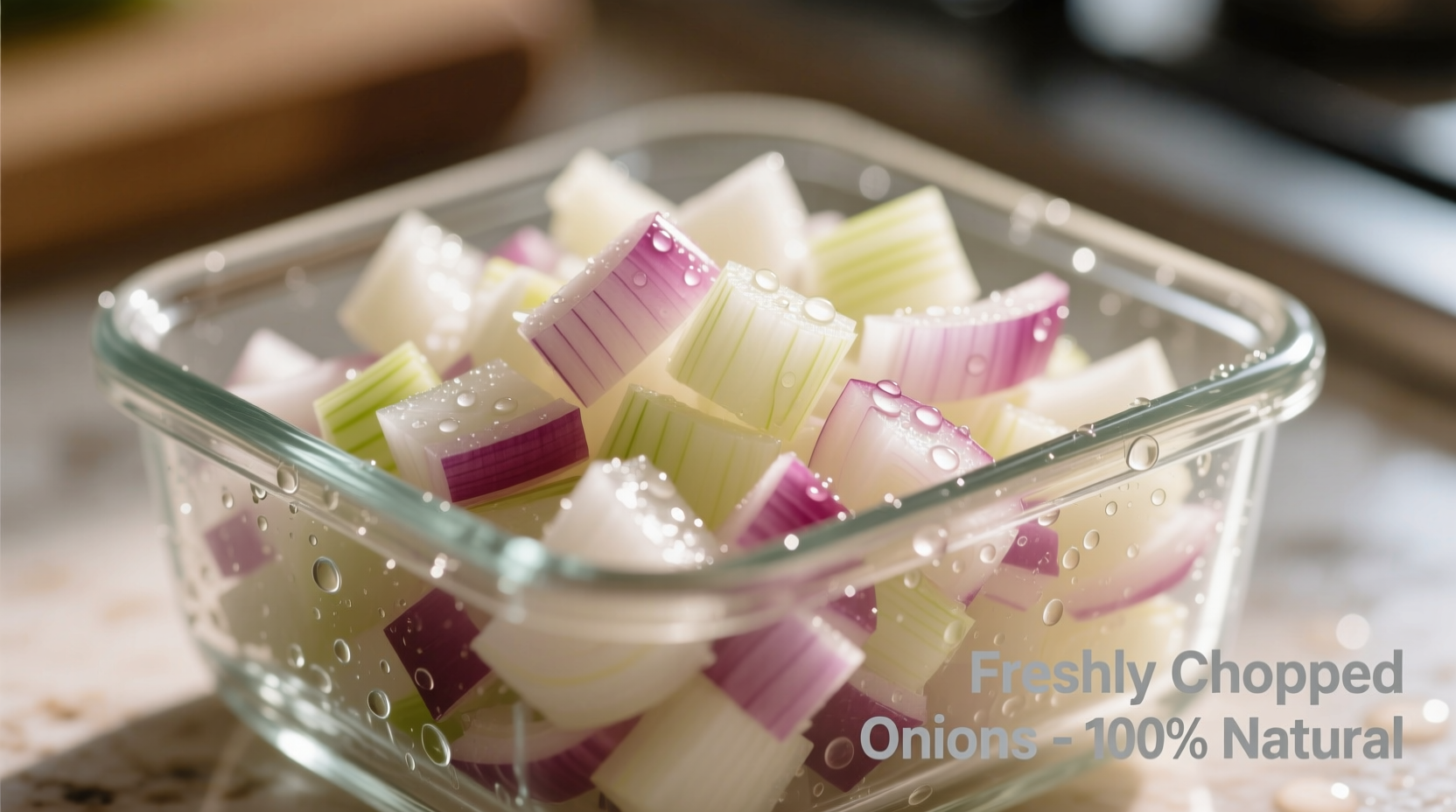Ever chop more onions than your recipe requires and wonder how long you can safely keep them? Properly stored chopped onions maintain freshness for 7-10 days in the refrigerator, preventing food waste while ensuring kitchen safety. This guide delivers science-backed storage techniques that professional chefs use to maximize onion shelf life while eliminating guesswork about spoilage signs.
Why Chopped Onions Degrade Faster Than Whole Bulbs
When you cut through an onion's protective layers, you expose its cellular structure to oxygen and moisture. This enzymatic reaction triggers faster deterioration compared to whole onions, which can last 3-4 weeks at room temperature. The National Onion Association confirms that cut surfaces accelerate moisture loss and bacterial growth, making proper refrigeration essential for food safety.

Your Step-by-Step Refrigeration Protocol
Follow these chef-approved steps immediately after chopping to maximize freshness:
- Cool completely - Allow chopped onions to reach room temperature (no more than 2 hours)
- Select appropriate container - Use glass or BPA-free plastic with tight-sealing lid
- Remove excess moisture - Pat dry with paper towel before storage
- Minimize air exposure - Fill container to 90% capacity to reduce oxygen
- Store properly - Place in main refrigerator compartment (not door)
| Storage Method | Shelf Life | Quality Preservation |
|---|---|---|
| Airtight container (40°F or below) | 7-10 days | 95% flavor retention |
| Plastic wrap directly on surface | 5-7 days | 80% flavor retention |
| Open container | 3-4 days | 60% flavor retention |
| Room temperature | 2 hours max | Rapid spoilage risk |
When Your Refrigerated Onions Have Spoiled
Don't rely solely on expiration dates - check these definitive spoilage indicators:
- Texture changes - Slimy or mushy consistency (not just soft)
- Color shifts - Yellowing or dark spots beyond normal oxidation
- Odor development - Sour or ammonia-like smell (distinct from raw onion scent)
- Visible mold - Any fuzzy growth requires immediate disposal
The USDA Food Safety and Inspection Service emphasizes that "when in doubt, throw it out" applies strictly to cut produce. Unlike whole vegetables, chopped onions provide ideal conditions for bacterial growth once spoilage begins.
Proven Techniques to Extend Shelf Life
Professional kitchens use these evidence-based methods to maximize chopped onion freshness:
- Vinegar mist technique - Lightly spray with 5% acidity vinegar solution before storage
- Freezing alternative - Portion into ice cube trays with water for 3-month storage
- Onion variety selection - Sweet onions degrade faster than yellow storage varieties
- Temperature consistency - Maintain refrigerator at 35-38°F (1.7-3.3°C) for optimal results
According to University of Minnesota Extension research, chopped yellow onions maintain quality 30% longer than sweet varieties under identical storage conditions due to their lower sugar content. This contextual boundary matters when planning meal prep.
Common Storage Mistakes That Shorten Shelf Life
Avoid these refrigerator errors that compromise onion freshness:
- Storing near ethylene-producing fruits like apples or bananas
- Using containers with imperfect seals (test by inverting)
- Placing in refrigerator door where temperature fluctuates
- Washing before storage (adds excess moisture)
- Storing with strong-smelling foods (onions absorb odors)
Food safety experts at the FDA warn that "temperature abuse" - allowing chopped onions to remain between 40-140°F for more than 2 hours - creates dangerous conditions for bacterial growth. Always refrigerate within the two-hour window, or one hour if kitchen temperatures exceed 90°F.
Special Considerations for Different Onion Types
Not all onions behave the same in storage. Understanding these context boundaries prevents premature spoilage:
- Red onions - Maintain color best in glass containers (plastic may cause discoloration)
- Shallots - Last 10-14 days due to higher sugar concentration
- Green onions - Store roots in water for extended freshness
- Caramelized onions - Reduce shelf life to 5-7 days due to moisture content
These distinctions matter because different onion varieties contain varying levels of sulfur compounds and sugars that affect their deterioration rates. Professional chefs adjust storage approaches based on these biochemical differences.











 浙公网安备
33010002000092号
浙公网安备
33010002000092号 浙B2-20120091-4
浙B2-20120091-4